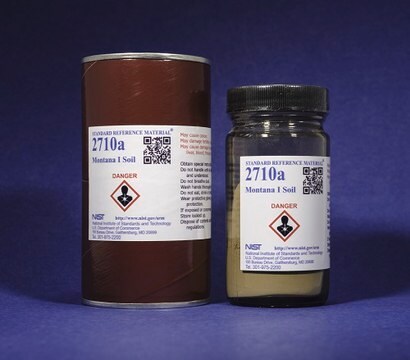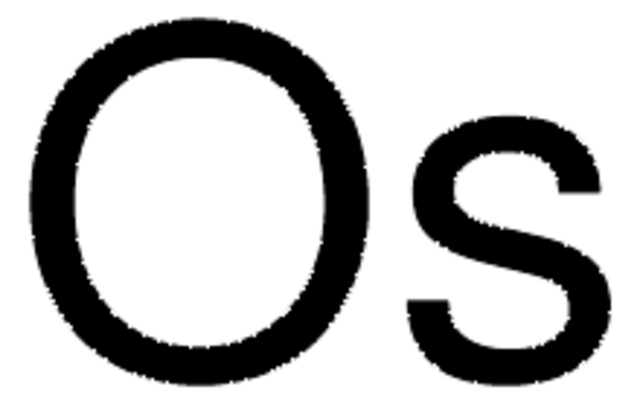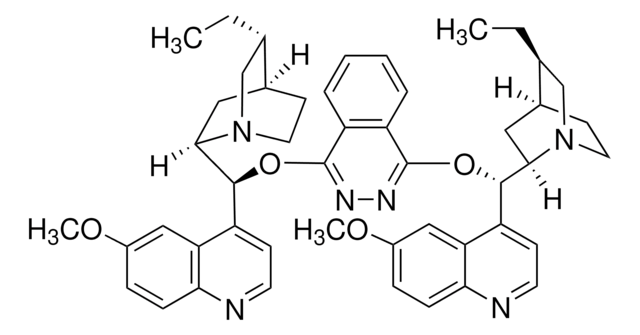658685
Os EnCat® 40
extent of labeling: 0.3 mmol/g Os loading
Sinónimos:
Osmium oxide, Osmium tetroxide, microencapsulated
About This Item
Productos recomendados
reaction suitability
core: osmium
reagent type: catalyst
reagent type: oxidant
extent of labeling
0.3 mmol/g Os loading
SMILES string
O=[Os](=O)(=O)=O
InChI
1S/4O.Os
InChI key
VUVGYHUDAICLFK-UHFFFAOYSA-N
General description
Application
Features and Benefits
Legal Information
signalword
Danger
hcodes
Hazard Classifications
Acute Tox. 2 Dermal - Acute Tox. 3 Inhalation - Acute Tox. 3 Oral - Eye Dam. 1 - Skin Corr. 1B
supp_hazards
Storage Class
4.1B - Flammable solid hazardous materials
wgk_germany
WGK 3
ppe
Eyeshields, Faceshields, Gloves, type P2 (EN 143) respirator cartridges
Elija entre una de las versiones más recientes:
¿Ya tiene este producto?
Encuentre la documentación para los productos que ha comprado recientemente en la Biblioteca de documentos.
Los clientes también vieron
Artículos
We offer EnCat and a variety of transition metal-based encapsulated catalysts for applications in areas such as Suzuki, Stille, and Heck couplings, carbonylations, hydrogenation, hydrogenolysis, and dihydroxylation.
Nuestro equipo de científicos tiene experiencia en todas las áreas de investigación: Ciencias de la vida, Ciencia de los materiales, Síntesis química, Cromatografía, Analítica y muchas otras.
Póngase en contacto con el Servicio técnico






